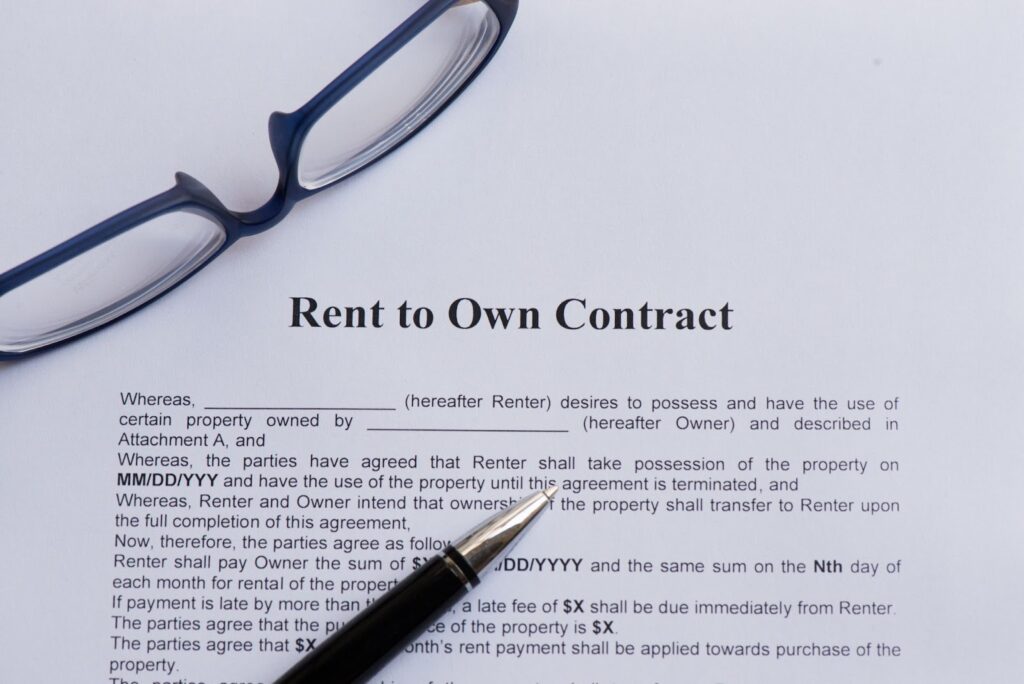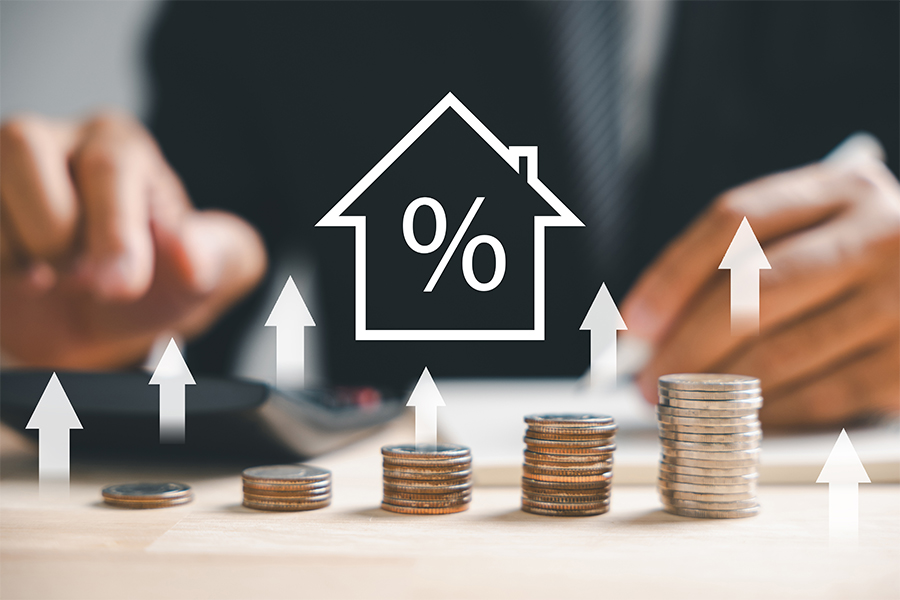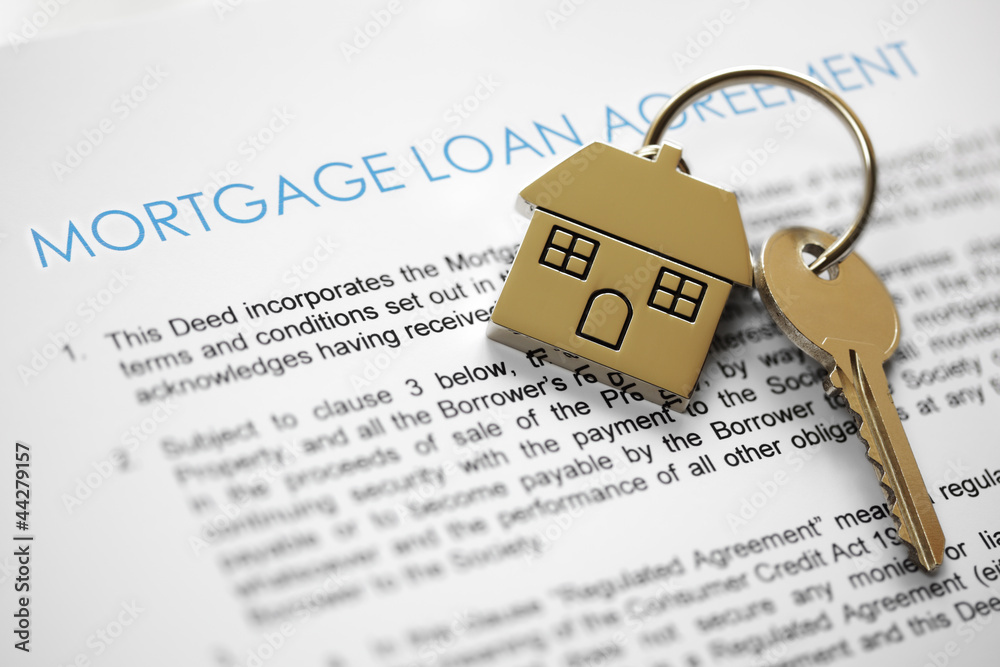Going the traditional route of securing a mortgage to buy a new home can pose challenges for want-to-be owners facing financial constraints or reservations about standard bank loans. In such cases, rent-to-own homes are an alternative homeownership option worth exploring. This guide explains how rent-to-own homes works for investors, shedding light on agreements and pertinent financial and legal details to help you determine if this option is right for you.
What Is a Rent-to-Own Home?
A rent-to-own home, also known as a lease-to-own property, is a real estate arrangement where tenants can buy the property they are renting after a specific period. In this type of agreement, a portion of the rent paid by the tenant goes toward building equity or is credited toward the home’s purchase price. The terms of the rent-to-own contract outline the purchase price, the option period during which the tenant can exercise the option to buy, rent premiums, financing terms, and option fees.

There are two ways a rent-to-own agreement can work for investors, whether they are looking to sell or looking to buy.
- Investors looking to buy: This can be an attractive option for individuals who aspire to own a property but face obstacles in the traditional homebuying process. It could be due to a lack of substantial down payment or a relatively low credit score. Utilizing the rent-to-own option grants you the opportunity to lease a property with the intention of purchasing it in the future, allowing you to save money and work toward enhancing your credit score
- Investors looking to sell: This is an opportunity for investors who want to offload a property while covering costs. If investors have a current tenant, they can opt to have their current tenant purchase the property, while continuing to build equity. This can also be done with an incoming tenant who’s interested in a rent-to-own option.
Lease Option vs Lease Purchase
There are two primary types of rent-to-own agreements: lease option and lease purchase. In both contracts, you can lease a home for one to three years with the option to buy at the term’s conclusion. While the investment process is largely similar, there are key distinctions. In a lease option agreement, you have the flexibility to opt out of purchasing the home after the lease expires. On the other hand, a lease purchase agreement necessitates a commitment from both the buyer and homeowner to proceed with the sale at the end of the lease term.
It’s important to note that funding must be secured by the end of the term of a lease purchase agreement to retain an exclusive claim to the home and all the rent credit that has been accumulated. If an individual fails to purchase the house, the homeowner may take legal action for breaching the contract. Therefore, those entering into this agreement should consult real estate professionals before making a decision to invest.
Pros & Cons of Rent-to-Own Homes
Rent-to-own presents certain advantages over traditional renting, but it also comes with its drawbacks. Here, my team and I outline some pros and cons of how lease-to-owns work, providing valuable insights for your consideration:
| Pros for Buying Rent-to-Own | Cons for Buying Rent-to-Own |
|---|---|
| Helps save for a down payment | May lose the money paid for rent if choosing not to buy |
| Gives time to improve credit score | Requires higher monthly costs than the current market rate |
| Monthly rental payment goes toward home purchase | May not receive the complete rent credit or use it entirely |
| Save enough money to cover large repair bills later on | If you don’t qualify for a mortgage, you may not be able to purchase the home |
| Offers the opportunity to rent with the option to buy homes or move to another property | Purchase price may end up higher than what the house is worth if the house value plummets during the rental period |
| Pros for Selling Rent-to-Own | Cons for Selling Rent-to-Own |
| Higher rental payments with an enhanced income stream compared to traditional rentals | Profits from a rent-to-own deal are realized over time, not immediately upon sale |
| Secures committed tenants resulting in secure occupancy | If the tenant fails to maintain payments or opts not to buy, the seller must restart the selling process, potentially facing financial losses |
| Negotiate and fix a sale price in advance, protecting against potential market declines and benefiting from market appreciations. | Property's value might decrease over the lease term, leading to a lower sale price than if sold outright initially |
| Fee paid by tenants in rent-to-own agreements is typically non-refundable, offering an additional financial benefit | Rent-to-own agreements can lead to maintenance disputes or neglect by tenants, possibly causing property damage and devaluation |
| Offers a clear timeline for investment return | Rent-to-own deals require complex contracts and more legal and financial expertise than standard sales or rentals |
Take the time to evaluate these pros and cons to ascertain whether a lease-to-own agreement aligns with your individual circumstances.
5 Steps of the Rent-to-Own Home Process
Once you have carefully considered the pros and cons and ensured it fits your particular aims and situation, the next step is to familiarize yourself with how a rent-to-own works. Here are the essential steps in buying a rent-to-own home:
1. Agree on the Property’s Purchase Price
Rent-to-own agreements must clearly outline when and how the home’s purchase price is determined. For a better deal as an investor, negotiate the purchase price before signing the lease. This critical detail may take one of two forms: an agreed-upon purchase price at the start of the contract, often set higher than the current market value, or deciding at the lease expiration based on the property’s then-current market value.
For homebuyers, it can be beneficial to establish a fixed purchase price in markets where home prices are on the rise. By setting a predetermined price before the lease term expires, buyers may need to agree to pay a price higher than the current market value. Still, this tactic can be a strategic way to anticipate potential future market appreciation.

Conduct a rental market analysis to gain insights into your real estate investment property.
To gain insights into a property’s income potential and assist in negotiating the purchase price, consider performing a rental market analysis (RMA). This involves thorough research of comparable rental properties, including examining local amenities and calculating formulas that consider average rental rates. By analyzing this data, an investor like you can determine whether a property will likely generate positive or negative cash flow, crucial information for making real estate investment decisions.
2. Review & Sign the Rent-to-Own Agreement
Prior to signing the contract, thoroughly review the terms and conditions outlined in the lease option or lease purchase agreement. Give careful attention to key details such as the duration of the rental period, the specified option fee, the monthly rent, and any obligations related to repairs and maintenance. Being well-informed from the start can prevent potential issues for both you and the seller down the road.
Here are some essential things to consider regarding rent-to-owns and how they work before signing the agreement:
- Choose the right terms of the agreement: Carefully review the terms and conditions, distinguishing between a lease option and a lease purchase. Be cautious with a lease purchase, as it commits you to eventually buying the property, which may potentially lead to financial strain.
- Examine the contract details: Look into the crucial contract details, including deadlines, option fees, rent payments, purchase price determination, exercising the option to buy, pet policies, maintenance responsibilities, homeowner association dues, property taxes, and additional maintenance requirements.
- Consult a real estate attorney: Seek advice from a real estate attorney to understand your rights and responsibilities as an investor. You might want to negotiate particular clauses before signing, and if the agreement doesn’t favor you, consider alternatives.
- Research the property: Before committing, conduct thorough research on the property. Order an independent appraisal, perform a property inspection, verify up-to-date property taxes, and check for any liens. These steps inform your decision on whether the property is worth investing in
- Investigate the seller’s background: Ensure a positive experience on rent-to-own home agreements by working with a reliable seller. Investigate the seller’s background by checking their credit report for financial stability and obtaining a title report to confirm their property ownership and equity
- Ask questions promptly: Address any questions about the rent-to-own agreement promptly to avoid uncertainties. Understand the circumstances under which you could lose the option to purchase, as certain contracts may revoke this right for late rental payments or failure to provide a written notice of your intention to buy.
3. Pay the Option Fee to the Seller
Once the contract is signed, the next step on how to rent to own a house is to pay the option fee. This fee is paid upfront to the seller and is nonrefundable. Although negotiable, it usually falls within 2% to 7% of the home’s purchase price. The option fee grants exclusive rights to acquire the property in the future. In the event that the purchase isn’t completed, the option fee is not refunded by the seller. Conversely, the option fee is commonly credited toward the final purchase price if the property is purchased.
4. Fulfill the Monthly Rental Payments
Following the agreement, tenants make the monthly charged rental payments. It’s important to note that the monthly payment typically involves an extra portion intended for the future down payment. Therefore, expect the rent payment to be higher than the current market rate, as it includes contributions toward an eventual home purchase.
5. Initiate the Mortgage Application Process
Based on the terms of the agreement, when the rental period concludes, the tenant will have the option to either pursue a mortgage for the property or choose not to proceed with the purchase. If the tenant opts to buy the home, the standard mortgage application process to secure financing will be initiated. However, note that if a tenant signs a lease purchase agreement, they are legally bound to fulfill the obligation of purchasing the home.

Apply for a mortgage by the end of the rental period.
Best Websites to Find Rent-to-Own Properties
If you’ve chosen lease-to-own as your preferred path, the subsequent step involves exploring available rent-to-own properties. To start researching on your own before engaging with a realtor, consider perusing real estate listing websites. Here are some recommended websites from my team and me where you can discover a variety of rent-to-own properties:
Website |  | |||
|---|---|---|---|---|
Key Features |
|
|
|
|
Learn More |
Frequently Asked Questions (FAQs)
Rent-to-own is a process where you rent a property for a certain period of time with the option to purchase it at the end of the lease agreement. A mortgage, on the other hand, is a loan you take out to finance the purchase of a property. With a mortgage, you own the property from the outset and pay off the loan over time, while with rent-to-own, you are essentially leasing the property with the option to buy it in the future.
A main reason to avoid rent-to-own agreements is that if you decide not to purchase the property at the end of the lease agreement, you may lose the extra money you paid toward the down payment. Unlike a traditional rental agreement where you only pay for the right to live in the property, with rent-to-own agreements, a portion of the monthly payment goes toward a down payment to buy the property eventually. If you end up not buying the property, you may lose the extra money you paid toward the down payment.
There is no one-size-fits-all answer to whether owning or renting a home is always better. It depends on factors such as your financial situation, lifestyle, and personal preferences. Owning a home provides more stability and the potential for long-term financial benefits, but it also comes with more responsibilities and expenses. Renting offers more flexibility and lower upfront costs, but it may not give the same sense of ownership and may not be a good long-term investment. Ultimately, your decision should be based on your own circumstances and goals.
Bottom Line
Rent-to-own homes can be an effective way for investors to secure a home without navigating the challenges of a traditional mortgage. By understanding what a rent-to-own home is, its pros and cons, and how a rent-to-own home process works, you can make informed decisions about whether to pursue this alternative homeownership option. If you’re considering a rent-to-own investment, it’s always best to consult a real estate professional to ensure that you make the right choice for your situation.